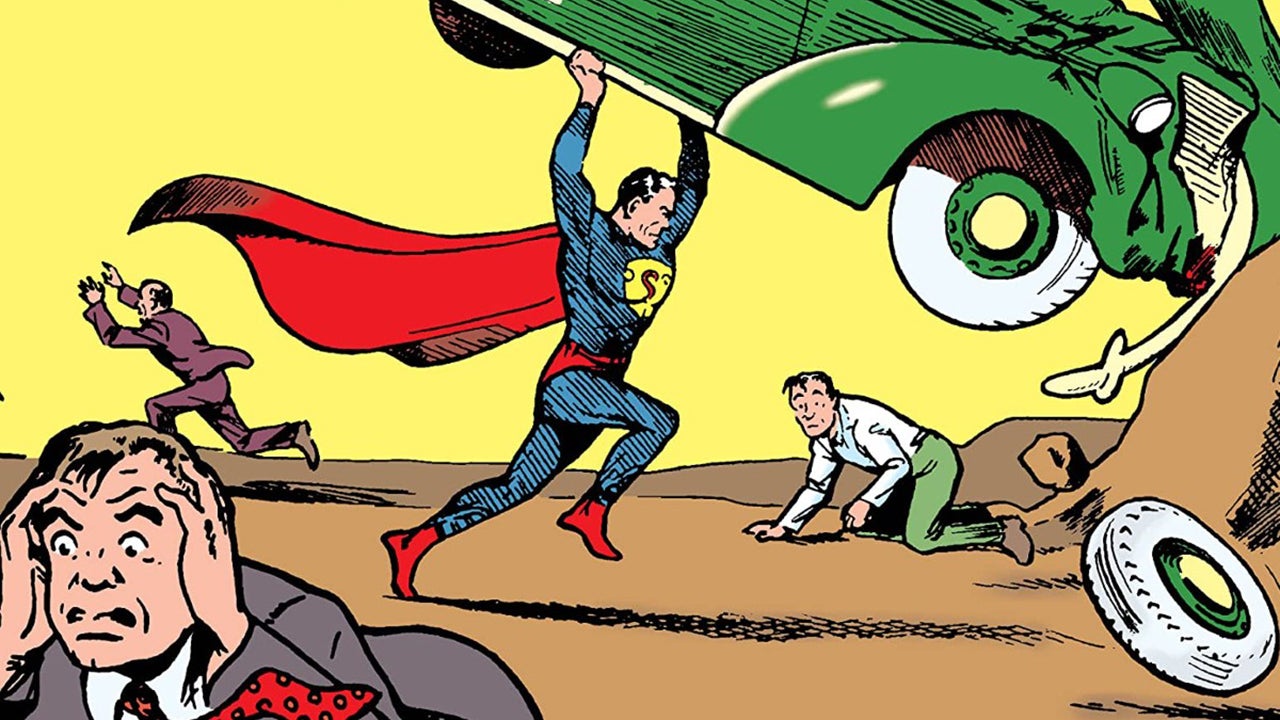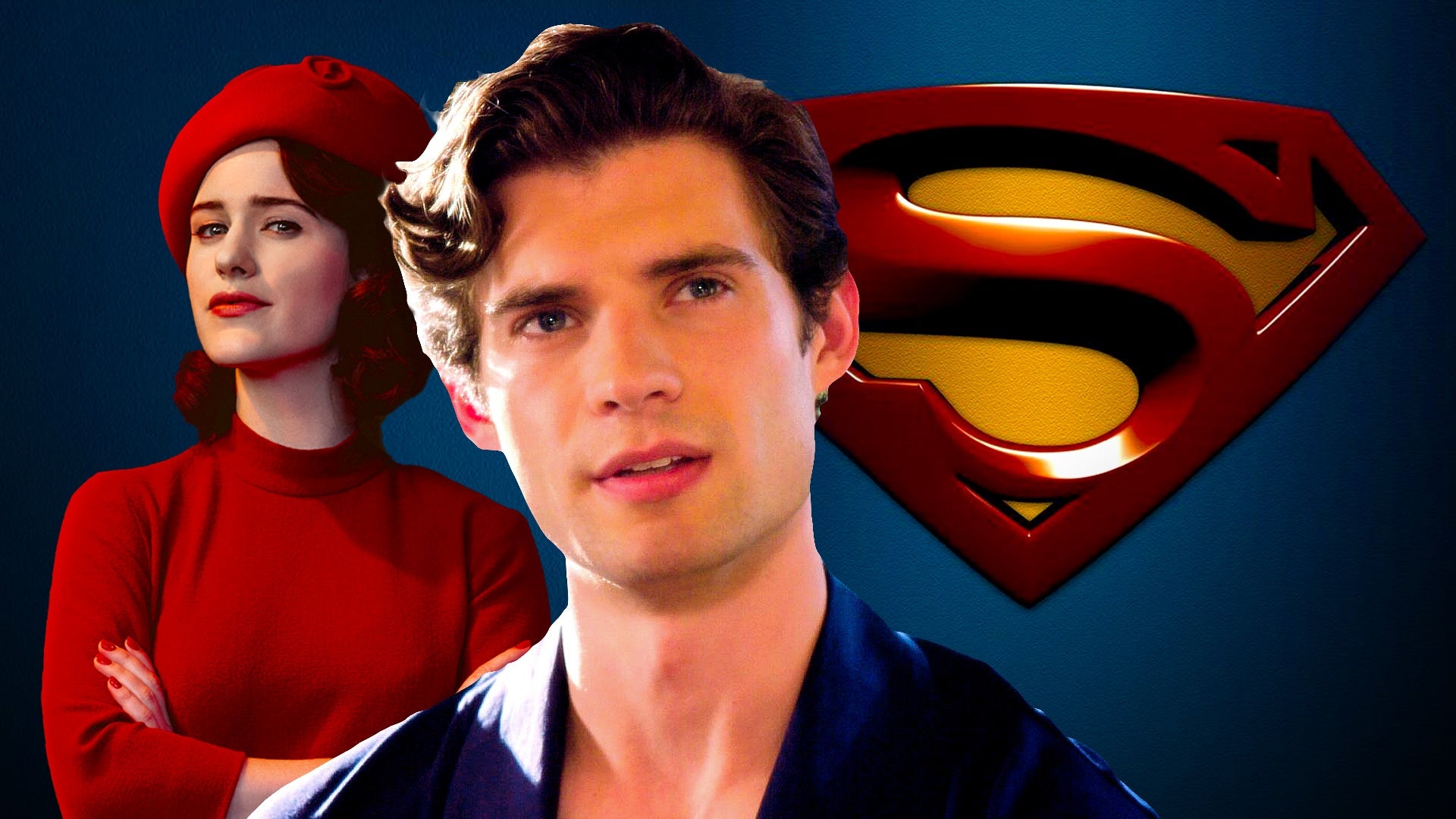A copy of Action Comics #1, the holy grail of comic books and the first appearance of Superman, just sold for $6 million through Heritage Auctions, making it the most expensive comic in history.
But that’s not even the interesting part.
Also auctioned, for a relatively paltry $264,000, is a three-page letter from 1934 written by Jerry Siegel, Superman’s co-creator, to artist Russell Keaton, offering to collaborate on a pitch for a new comic strip titled “Superman.” This inchoate version is similar to, yet markedly different from, the familiar Man of Steel. It’s a little-known gem of comic book history, and a fascinating look at what might have been.
The Birth of Jerry Siegel and Russell Keaton’s Superman
Russell Keaton was the artist of the popular newspaper comic strip Skyroads, as well as the ghost artist on the Buck Rogers Sunday strip. His illustration style was similar to Joe Shuster’s, Superman’s other co-creator, but it was more developed.
Siegel and Shuster had temporarily parted ways back then, after their earlier version of “The Superman” had been rejected by publishers. Shuster became despondent, even burning the original artwork (only the cover survived). Hoping an established artist would help change things, Siegel wrote to several.
Some accounts of these events have portrayed Siegel as callous, ditching his partner and best friend for a chance at success. But in his unpublished memoir Creation of a Superhero, written in 1979, Siegel describes how Shuster had given up on the project, leaving him to move on without him.
Either way, of the artists Siegel wrote to, Keaton bore out. In the auctioned letter, Siegel details his “trifle fantastic” idea for a newspaper comic strip (the letter is from June 12, 1934, predating what is generally considered the first modern comic book, Famous Funnies #1, from July 1934) about a hero who can “leap over a ten story building, raise unheard-of weights, run as fast as an express train”—what would become the famous intro, “faster than a speeding bullet, more powerful than a locomotive, able to leap tall buildings in a single bound.”
Siegel and Keaton collaborated through mail, producing nine known strips between June and November 1934. You can read them here.
A Hero From Earth’s Doomed Future
Their Superman was literally the Man of Tomorrow, a toddler sent not from distant planet Krypton but from millions of years in Earth’s future, when humans have evolved to gain “titanic strength.” As “giant cataclysms” destroy the planet, the last man on Earth, an unnamed scientist, sends his son back to 1935 in a small time machine he invented (Siegel intended the adult Superman’s adventures to take place in the near future).
He’s found by Sam and Molly Kent, red-blooded Americans who can’t understand the strange language the child speaks, leading them to think that “his people came from a foreign country.” They turn him over to an orphanage but later return to adopt him, naming him Clark.
Following strips would have shown him grow to adulthood and decide to “devote his existence to helping those in need” as Superman. He would have had super-strength and super-speed, but no costume.
Like palimpsests and pentimenti—writings and paintings that were covered over with new ones but still contain traces of the old—the Siegel/Keaton strips are an intriguing look at the evolution of the mythology.
When he made his first appearance in Action Comics #1, baby Superman was rocketed to Earth from a distant planet by his scientist father, whereupon he was found by “a passing motorist” who dropped him off at an orphanage. By the following year’s Superman #1, the planet was named Krypton and the Kents were back, the wife now named Mary. They wouldn’t be named Jonathan and Martha until Adventure Comics #149 (February 1950) and Superboy #12 (January 1951), respectively.
Compared to these origins, the earlier Siegel/Keaton version placed greater emphasis on Superman’s alienness. Instead of a baby, he’s sent away as a three-year-old, old enough to talk and cry out homesick. It’s more poignant, but also less clean and fablelike.
Found in the time machine with him is a hidden note, which in future strips would have been revealed to describe his heritage. But by adulthood, he can no longer read it. This abandoned plot point is a strong reflection of the immigrant metaphor at the heart of Superman; speaking in a second language was the first challenge of assimilation, and forgetting the ancestral tongue over time its cost.
It’s also evocative of the letters sent with children fleeing the Nazis in the Kindertransport, many of whom were raised unaware of the community and culture they were uprooted from. (The concept did, however, eventually find its way into lore, coincidentally or not, in the form of a Kryptonian tablet Clark can’t decipher, in Mark Waid and Leinil Francis Yu’s Superman: Birthright (2003–2004).)
The main difference in Siegel and Keaton’s origin story—that Superman escaped the destruction of Earth rather than Krypton—was haunting, but likely too morbid. And it was incongruous to his character, which even then was optimistic. It did, however, make him even more like Moses—where the “baby whisked to safety in a small craft” idea came from—since as a human from the future, he was a hero returning to his own people with amazing abilities to save them.
The Seeds of the Superman We Know Today
According to Siegel, both Bell Syndicate and Publishers Syndicate showed interest in the strip, but it didn’t come to pass. Keaton withdrew from the partnership, abruptly and without explanation. Likely, it was either because he discovered that Siegel was only 20 years old or because he decided to pursue his own comic. Keaton launched the syndicated strip Flyin’ Jenny in October 1939, about a daring aviatrix. It became fairly successful, though it was discontinued in 1946 following his death from cancer.
Siegel recounts in his memoir how the day he received Keaton’s terse rejection became the famous sleepless night in which all the elements of the familiar Superman fell into the place, sometime in late November 1934. The following morning he raced over to Shuster’s home, and by the evening they had several weeks’ worth of strips.
It would take them four more years to sell Superman to DC, but that’s a story for another time.
Roy Schwartz is a pop culture historian and critic. His work has appeared in CNN.com, New York Daily News, The Forward, Literary Hub, and Philosophy Now, among others. His latest book is the Diagram Prize-winning Is Superman Circumcised? The Complete Jewish History of the World’s Greatest Hero. Follow him on Twitter, Instagram and Facebook @RealRoySchwartz and at royschwartz.com.









